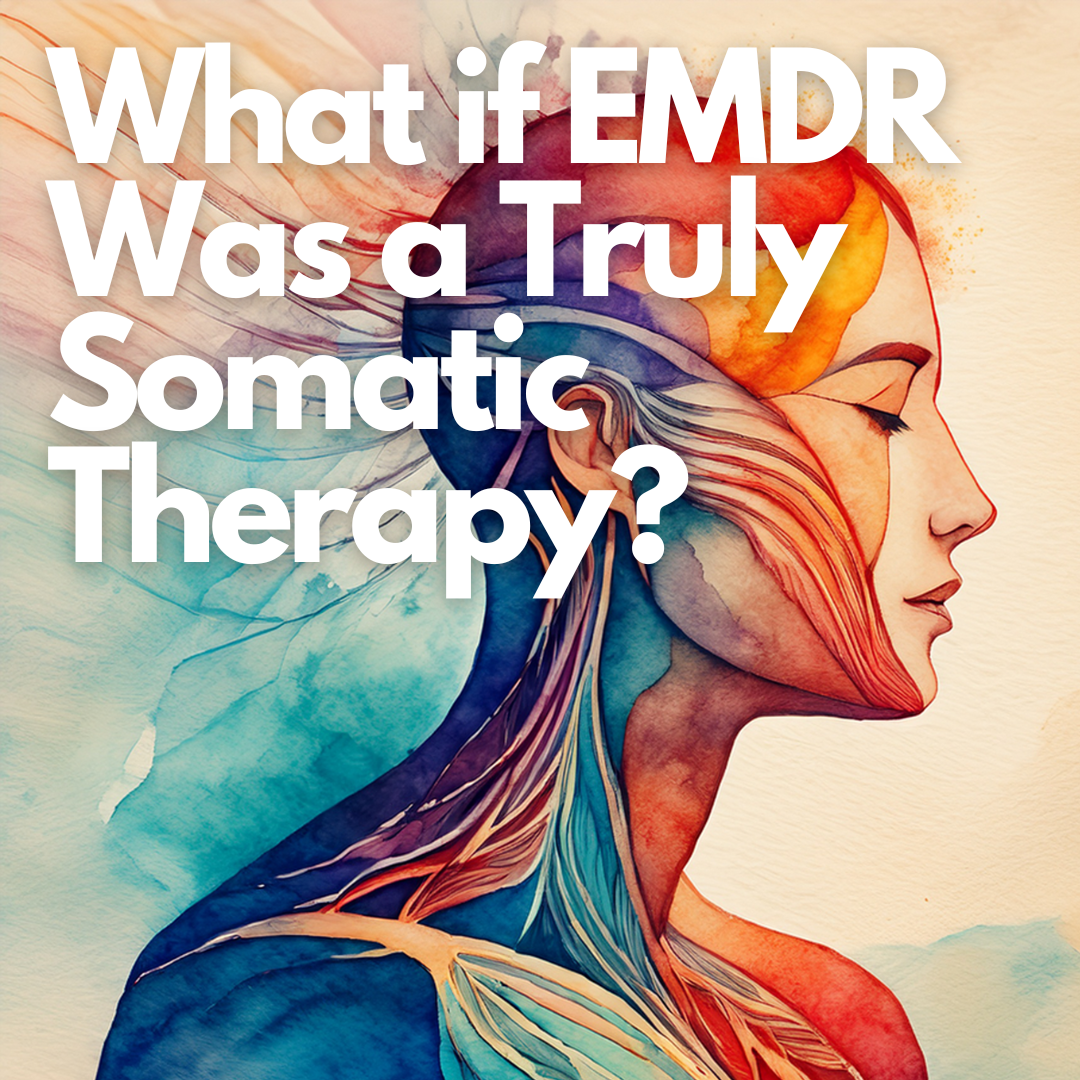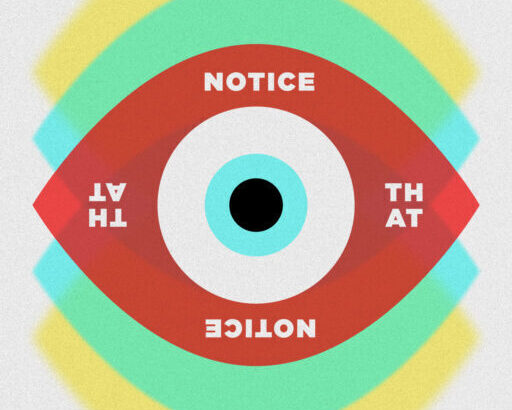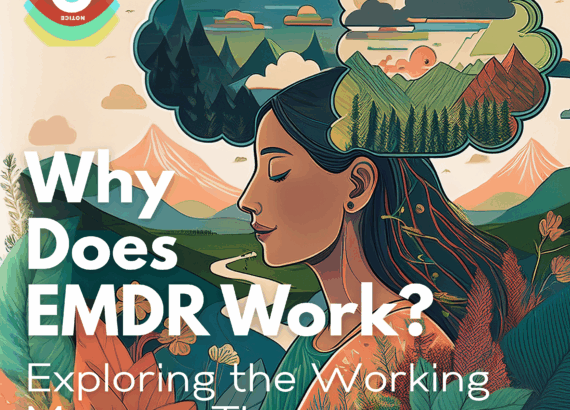What if EMDR Was a Truly Somatic Therapy?

What if EMDR Was a Truly Somatic Therapy?
In the world of EMDR therapy, conversations about somatics are becoming more and more common. But what if somatics wasn’t just a helpful layer to add onto EMDR? What if it was the foundation? What if we could reimagine EMDR as a truly somatic therapy—one that centers the body as the primary source of healing, rather than just another variable to account for?
In a recent episode of Notice That: An EMDR Podcast, Melissa, Bridger, and Jen gathered to reflect on their first EMDR Basic Training as trainers through Beyond Healing Institute—and to introduce a new series that dares to ask big, paradigm-shifting questions about the nature of trauma and the future of EMDR.
Launching Something New: The First Beyond Healing EMDR Training
After two years of planning and waiting for approval, the team finally launched their EMDR Basic Training—and it exceeded expectations. What struck them most was how natural the experience felt. The structure of the training emphasized spaciousness, human connection, and honoring the therapist as a vital part of the therapeutic process. Participants left not just informed, but embodied—ready to bring the work into their practice with confidence and clarity.
For Melissa, this experience prompted deeper questions about the nature of EMDR itself—questions that have been simmering for years: What would it mean to practice EMDR from a truly somatic orientation? What would change if we made the body—not the memory—the primary focus?
Trauma as the Disallowance of Natural Expression
One of the core ideas introduced in this episode is a somatic definition of trauma:
Trauma is a moment when the body is disallowed its natural response.
Whether through physical restraint, anesthesia, shaming, fear, or relational danger, the body’s innate need to express gets halted. What remains is energy that no longer has a context—a charge without a story. That disoriented energy gets stored in the body and, over time, leads to patterns of dissociation, confusion, and eventually depression.
From this lens, trauma work is about recontextualizing that energy—giving it back its story—and then addressing the fear (or phobia) that originally caused it to be repressed. Healing, then, becomes about both remembering and reclaiming what the body lost access to.
Suppression, Repression, and Depression: A Somatic Venn Diagram
The team explored the difference between suppression and repression, noting that these terms are often used interchangeably but reflect very different processes. Suppression is a conscious decision to hold something back—functional, temporary, and often socially necessary. Repression, on the other hand, is unconscious and usually the result of overwhelming trauma.
Chronic repression, over time, often leads to depression—what Melissa described as a loss of access to the body’s vital energy. This devitalization shows up as apathy, confusion, loss of identity, and disconnection from wants, needs, and affect. The work of trauma healing becomes a process of revitalization—not just regulation.
Moving Beyond Regulation
One of the major themes of this episode is the critique of the current cultural obsession with “nervous system regulation.” While regulation is a helpful part of the process, it is far from the whole picture. Melissa invites us to ask:
Why are we so afraid of activation? Why do we associate calmness with healing, and intensity with danger?
From a somatic lens, regulation is not about minimizing activation—it’s about supporting the body in accurately responding to the environment. That means we need to move beyond the dichotomy of regulated = good and dysregulated = bad. Sometimes, yelling, shaking, crying, or expressing intense emotion is the most accurate and necessary response a body can have.
Rewriting the Protocol: Why EMDR Isn’t Somatic (Yet)
Despite its growing popularity, EMDR in its standard form is not a somatic therapy. As Melissa puts it bluntly:
“The only thing somatic about the standard protocol is one question: ‘Where do you feel that in your body?’”
Even the body scan at the end of Phase 6 is often used to check if the client is “done,” rather than to deeply listen to the body’s story. Somatics, in its truest form, isn’t about control or compliance. It’s about contact. Real, honest, present-moment contact with the body as it is—not as we want it to be.
The team explored how preparation in somatically-focused EMDR would look radically different. Rather than beginning with calmness and containment, it might begin with something more raw and real:
“Welcome to your body. How does it feel to be here? What sensations do you notice? Can you feel your aliveness?”
Preparing the Body for Healing
In this series, the team will continue to explore how trauma healing changes when we lead with the body. Upcoming episodes will dive into:
- The concept of affect phobia—why we’re so afraid of feeling, and how to titrate our way back into sensation.
- The somatic preparation phase—how to support clients in making safe, loving contact with their bodies before jumping into memory work.
- The reclamation of sensation and affect—how we guide clients back into vitality in ways that feel empowering, not destabilizing.
And most importantly: how to do all of this without losing the humanity, play, and relational connection that makes healing possible
Want to Learn More?
If this episode sparked something in you—whether a question, a memory, or a deep resonance—we want to invite you into further learning. Beyond Healing Institute’s EMDR Basic Training is infused with this somatic lens, and there are three opportunities to join us in 2025:
🗓️ May 15–17 | Springfield, Missouri (Live + Zoom)
🗓️ August 7–9 | Springfield, Missouri (Live + Zoom)
🗓️ November 13–15 | Springfield, Missouri (Live + Zoom)
You can learn more and register at connectbeyondhealing.com
Takeaways for Your Practice
Here are a few reflections you might carry with you into your clinical work:
- Reconsider what it means to “regulate.” Is calmness the goal—or is presence?
- Invite the body into the process—not as a data point, but as a guide.
- Be curious about what was disallowed. What energy, affect, or expression was blocked—and why?
- Give clients permission to rediscover themselves. Vitality can be confusing at first. Let there be room for exploration, play, and gentle messiness.
The somatic turn in EMDR isn’t a rejection of the protocol—it’s a reimagining of what’s possible when we bring the whole human into the room. Including ourselves.
What stood out to you from this conversation? How are you thinking about trauma, the body, and EMDR differently? Drop a comment or reach out—we’d love to keep this dialogue going.





